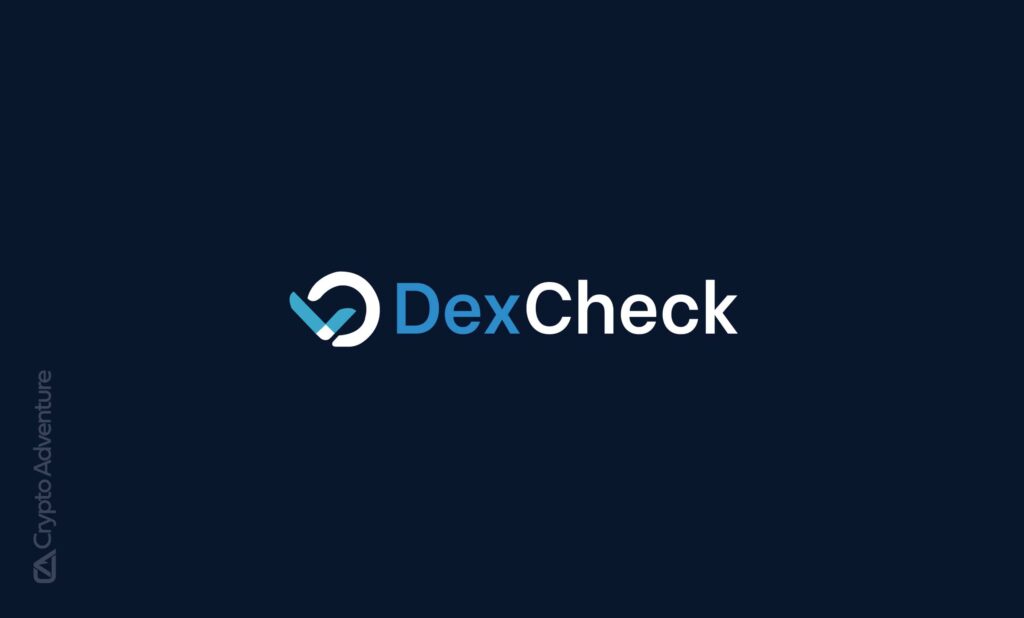Investing in the stock market can be a daunting task, especially with the plethora of theories and strategies available. From simplistic pop investing books to dense analyses by financial experts, the options can be overwhelming. However, focusing on a few key strategies can help even beginning traders lay a solid foundation for long-term success.
Before diving into trading, it is essential to understand the fundamental principles and techniques that have stood the test of time. These strategies, when properly applied, can help investors manage risks and maximize returns. Whether your goal is to build a balanced portfolio, capitalize on market trends, or generate steady income, grasping these essentials is crucial.
Below, we explore five key investment strategies that every aspiring trader should learn before entering the market. These include value and growth investing, dollar-cost averaging, and more. Each strategy is broken down to explain its core principles and advantages, providing a clear understanding of how they work and when to apply them.
Key Takeaways
- Assess Your Financial Situation: Before selecting a stock market strategy, thoroughly evaluate your financial situation, risk tolerance, and investment goals. Self-awareness is the basis of any approach you take.
- Understand Passive Index Investing: This involves putting money into index-tracking mutual or exchange-traded funds (ETFs), offering built-in diversification and a hands-off approach.
- Growth Investing Insights: Investors following growth strategies should keep an eye on the executive teams of firms they’re investing in and stay updated on relevant economic news.
- Momentum Investing Basics: Momentum investors buy stocks trending upward and short sell them when they appear likely to decline.
- Advantages of Dollar-Cost Averaging: This disciplined approach involves investing consistently over time, removing the pressure of trying to time the market perfectly.
Getting Started
Before selecting an investment strategy, gather some basic information about your finances by answering these strategic questions:
1. How Are Your Finances?
Ensure you can afford to invest. If you have debts or other obligations, consider how investing will impact your short-term cash flow. Most advisors recommend paying down debts and having a three-to-six-month emergency fund before investing significantly.
2. What Are Your Financial Goals?
Determine your objectives, whether it’s saving for retirement, making large purchases, or funding education. Each goal requires different levels of liquidity, opportunities, and risk.
3. What Is Your Risk Tolerance?
Risk tolerance is influenced by age, income, and how long you have until retirement. Younger investors can generally afford more risk as they have time to recover from losses. Personal comfort with risk also plays a crucial role in strategy selection.
4. Can You Handle Market Volatility?
Prepare for market fluctuations by discussing past experiences and potential future volatility. Diversified investing helps spread out risk, reducing the impact of any single market downturn.
Once you’ve answered these questions, learn the basics of investing, such as reading stock charts and analyzing financial statements. Stay updated on industry news to ensure informed investment decisions.
Strategy 1: Passive Index Investing
Passive index investing has gained popularity since the introduction of index-based mutual funds in the 1970s and ETFs in 1993. Unlike actively managed funds, which aim to beat the market, passive funds track an index like the S&P 500. This strategy offers several advantages:
Pros
- Lower Costs: Minimal trading, research, and management fees.
- Simplicity: Easy to implement through passive funds.
- Broad Diversification: Exposure to multiple sectors.
- Long-term Growth Potential: Aligns with market performance.
- Flexibility: Suitable for a buy-and-hold strategy.
Cons
- Market Performance: Can’t outperform the market.
- Volatility: Exposure to market downturns.
- Missed Opportunities: In specific sectors or regions.
- Tracking Errors: Potential mismatch between fund and index performance.
Who Benefits from Passive Index Investing
This strategy is ideal for beginner investors looking to gain market exposure without extensive research. It also benefits long-term investors saving for retirement or other distant goals, as the buy-and-hold nature allows for riding out short-term market fluctuations and benefiting from compound growth.
In conclusion, by understanding and applying these key investment strategies, you can build a robust financial future. Assess your financial situation, determine your goals and risk tolerance, and choose a strategy that aligns with your comfort level and objectives. Whether you are a novice or experienced investor, these foundational principles will guide you toward long-term success in the stock market.
**Investments Roundup: Harris, iCapital, CAIA, Abacus Life, Kingswood, and More**
**Q&A with Rana Wright of Harris | Oakmark – Our Investments Solutions Leader of the Month – and Product News Featuring Morningstar, iCapital, Raymond James, Abacus Life, BlackRock, T. Rowe Price, CAIA, Kingswood, Franklin Templeton, Cerulli, and HFR**
*Chris Latham, Managing Editor, Wealth Solutions Report*
—
**Rana Wright, Partner and Chief Legal and Administrative Officer, Harris | Oakmark**
In this edition of the Investments Roundup, we speak with our newest Investment Solutions Leader of the Month, Rana Wright, Partner and Chief Legal and Administrative Officer at Harris | Oakmark, who discusses the firm’s rebrand and investment strategies.
**Other Highlights:**
– Morningstar Wealth releases an asset class conviction report.
– iCapital partners with Ashton Thomas on alternative investments.
– Raymond James Investment Management appoints Mo Sparks as Head of ETFs.
– Abacus Life agrees to acquire Carlisle Management Company.
– BlackRock launches the iShares U.S. Manufacturing ETF.
– T. Rowe Price launches its Intermediate Municipal Income ETF.
– CAIA releases a report on advisors’ hurdles with alternatives.
– Kingswood U.S. expands its investment banking group.
– Cerulli finds limited advisor appetite for crypto.
– HFR reports total hedge fund assets reached $4.31 trillion.
– Franklin Templeton launches SMA and Managed Options Strategies at UBS.
**Larry’s Take:**
*Larry Roth, CEO, Wealth Solutions Report*
Reports from CAIA and Cerulli highlight significant challenges in wealth management. Despite technological and product innovations, many advisors are hesitant to take risks with their clients’ investments. Mutual funds still dominate over ETFs, and advisors remain cautious about adopting new asset classes like alternatives and crypto. However, staying ahead of the curve is essential for attracting and retaining clients. Eventually, advisors will need to embrace these “new” asset classes.
If you’d like to discuss these trends and their impact on your business, contact Larry Roth at larry.roth@rlrstrategicpartners.com.
—
**1. Harris | Oakmark Talks Rebranding and Investment Strategies**
Chicago-based Harris | Oakmark, founded in 1976 as Harris Associates, has managed the Oakmark family of mutual funds since their inception in 1991. As of June 30, Harris | Oakmark managed $102 billion in assets, while the Oakmark Funds had $56 billion in AUM. Harris | Oakmark offers strategies for private wealth managers, financial advisors, institutions, and consultants.
**WSR: Why did Harris recently rebrand and what does the rebrand signify?**
**Wright:** Harris | Oakmark reflects our business across institutional and retail shareholders. Our new logo signifies our unwavering value investing philosophy. Harris Associates remains our legal name and will continue to be used when referencing our role as the investment adviser to the Oakmark Funds.
**WSR: How has your legal background prepared you for your role at Harris | Oakmark?**
**Wright:** My legal background equips me to navigate complex regulatory frameworks, ensuring risk mitigation and sustainable returns. It fosters transparency, clarity, and accountability, supporting our client-centric focus.
**WSR: What investment strategies should financial advisors consider given the market environment, and why?**
**Wright:** Financial advisors must determine suitable investments for their clients. At Harris | Oakmark, we offer fundamentally driven, actively managed portfolios for long-term value investors. Our concentrated portfolios allow us to pair well with other offerings, rounding out a client’s investment portfolio.
—
**2. Morningstar Wealth Has Conviction on Large U.S. Banks, Chinese Tech Stocks**
Morningstar Wealth’s Global Convictions: July 2024 Asset Class Research favored defensive equities, U.S. banks, Chinese tech stocks, emerging markets debt, and government bonds. The first half of 2024 saw significant returns, with the S&P 500 Index up 15.3%.
—
**3. iCapital Partners with Ashton Thomas on Automated Alts Access for Advisors**
iCapital partnered with Ashton Thomas Private Wealth to provide advisors with access to data management and alternative investment opportunities, including private equity, real estate, and hedge funds. This partnership aims to simplify asset management and enhance overall efficiency.
—
**4. Raymond James Hires Mo Sparks to Build Out ETF Product Platform**
Raymond James Investment Management appointed Mo Sparks as Head of ETFs, responsible for building out an ETF product platform scheduled for launch in 2025. Sparks brings over 12 years of experience in ETF management and distribution.
—
**5. Abacus Life Agrees to Acquire Carlisle Management in Luxembourg**
Abacus Life, an alternative asset manager specializing in specialty insurance products, agreed to acquire Carlisle Management Company for $200 million. The acquisition aims to enhance Abacus’ offerings to institutional investors.
—
**6. BlackRock Launches iShares U.S. Manufacturing ETF**
BlackRock launched the iShares U.S. Manufacturing ETF (NYSE: MADE), focusing on leading U.S. manufacturing companies. This ETF aims to capture opportunities from policies incentivizing the reshoring of manufacturing activities.
—
**7. T. Rowe Price Launches Actively Managed Intermediate Municipal Income ETF**
T. Rowe Price launched its first federally tax-free fixed income ETF, focusing on investment-grade intermediate-term munis. The ETF seeks to provide income exempt from federal income taxes and has a net expense ratio of 0.24%.
—
**8. CAIA: Hurdles Remain for Advisors Looking to Add Alts**
The CAIA Association released a report highlighting the challenges advisors face when allocating alternative investments to client portfolios. Despite improved understanding and access, practical implementation remains underdeveloped.
—
**9. Kingswood U.S. Continues Buildout of Investment Banking Group**
Kingswood U.S. expanded its investment banking team with the appointment of Tony Tian as Senior Managing Director. The firm continues to source middle-market companies with strong long-term prospects.
—
**10. Cerulli: Well Over Half of Advisors Still Have No Appetite for Crypto**
Cerulli Associates found that 13.7% of advisors use or discuss cryptocurrency with clients, with a mere 2.6% making recommendations. Over half of advisors have no plans to use or discuss crypto, despite significant price increases in Bitcoin and Ethereum.
—
**11. HFR: Total Hedge Fund Assets End 2Q at Record $4.31 Trillion**
HFR reported that total hedge fund assets reached $4.31 trillion at the end of 2Q, driven by performance-based gains despite overall industry outflows. The HFRI Cryptocurrency Index returned 25.5% in 1H 2024.
—
**12. Franklin Templeton Launches SMA, Managed Options Strategies at UBS**
Franklin Templeton launched active and passive tax-managed SMA strategies on UBS Wealth Management’s platforms. These strategies aim to provide personalized portfolios with the potential to improve after-tax returns.
- Ines
- No Comments
Improving Crypto Investment Strategies with AI Analytics: The DexCheck AI Revolution

In the ever-evolving world of cryptocurrency, making informed investment decisions is crucial yet increasingly challenging. With over one million new tokens created since April 2024, traders are overwhelmed by choice, leading to missed opportunities and poorly informed trades. DexCheck AI, an AI-driven crypto analytics platform, aims to address these challenges by leveraging artificial intelligence (AI) and machine learning (ML) to provide comprehensive insights, enhancing decision-making and market transparency.
The Need for Comprehensive and Integrated Analytics
The dynamic nature of the crypto market poses significant challenges in ensuring data accuracy and reliability. Despite a reported drop in the value received by illicit addresses, scams and fraudulent activities remain prevalent, complicating market navigation for traders. Existing tools often fall short, providing fragmented data and complex interfaces that deter potential investors.
DexCheck AI fills this gap by offering a suite of key features designed to streamline the trading process and provide integrated analytics:
Comprehensive Token Analytics
- DexCheck AI delivers up-to-date information on market trends and token performance across major blockchains.
- AI-powered insights enable users to stay ahead of market movements and make data-driven decisions.
Dump Risk Radar
- This tool helps users monitor potential risks and predict possible price drops.
- By identifying tokens with high unrealized profits, it provides comprehensive risk assessments, allowing for better investment management.
Wallet Analyzer
- The Wallet Analyzer offers detailed insights into specific crypto wallets, including trading history, profit and loss records, holdings, and entry and exit prices.
- Traders can analyze the performance and strategies of individual wallets thoroughly.
Crypto Whale Tracker
- Users can monitor influential market players and gain valuable insights into significant market movements.
- The tool provides visibility into the trading activities of large-scale traders, known as whales.
DexCheck Pad
- The launchpad platform connects users to crypto projects supported by prominent venture capitalists, facilitating nearly $5 million in funding for various initiatives.
- It offers traders opportunities to invest in upcoming crypto ventures, backed by industry experts.
The Role of the DCK Token
Central to the DexCheck AI ecosystem is the DCK token, which offers users access to advanced features and benefits through staking:
- Premium Features: Holding DCK tokens allows users to access premium features on the platform, including advanced analytics and predictive models.
- Participation in DexCheck Pad: DCK tokenholders can participate in private and public sales of upcoming crypto projects, gaining early access to high-potential investments.
- Staking Rewards: Users can earn rewards by staking DCK tokens, providing additional returns on their investment.
- Governance Participation: Tokenholders can influence decisions on feature development and platform improvements by participating in the platform’s governance.
Driving Innovation in the Digital Economy
DexCheck AI leverages data analysis and ML to drive the next wave of innovation in the digital economy. By providing comprehensive, integrated insights and reducing the complexities of data interpretation, DexCheck empowers traders with the tools needed to navigate the increasingly crowded and volatile crypto market.
Platforms like DexCheck AI are crucial for the future of crypto trading, offering the necessary analytics to make informed decisions and maximize potential returns. As the crypto landscape continues to evolve, embracing AI-driven solutions will be key to maintaining a competitive edge and achieving investment success.
This article highlights the innovative features and benefits of DexCheck AI, showcasing how AI and ML can revolutionize crypto investment strategies. By providing comprehensive insights and reducing data interpretation complexities, DexCheck AI empowers traders to make informed decisions and navigate the volatile crypto market effectively
- Ines
- No Comments
The Responsibility of ESG Investors to Respect Human Rights and Prevent ‘Rightswashing’
As global environmental, social, and governance (ESG) investments surge, a critical oversight persists: the inadequate consideration of human rights. A recent report from the UN Working Group on Business and Human Rights highlights this gap, urging investors to prioritize people and the planet in their decision-making processes. With global ESG assets expected to surpass $40 trillion by 2030, accounting for more than a quarter of all assets under management, the need for comprehensive and ethical investment strategies is more pressing than ever.
Understanding ESG and Sustainable Investments
ESG and sustainable investment strategies have garnered significant attention due to their potential to positively impact society and the environment. While these approaches are often used interchangeably, they both emphasize the importance of incorporating ethical considerations into investment decisions. However, the expectation that ESG and sustainability investments inherently include human rights considerations is not always met.
The Importance of Human Rights in ESG Investments
Respecting human rights is a fundamental responsibility for all businesses, including those in the financial sector. This principle is enshrined in the UN Guiding Principles on Business and Human Rights (UNGPs), adopted by the UN in 2011. The UNGPs outline the duty of businesses to respect human rights and have been incorporated into international, regional, and national legislation, such as the recent European Corporate Sustainability Due Diligence Directive.
Despite these frameworks, there remains a significant gap in the implementation of human rights considerations within ESG investments. Investors often focus on environmental and governance aspects while neglecting the social dimension, which includes human rights. This oversight can lead to ‘rightswashing,’ where companies and investors superficially claim to uphold human rights without implementing genuine measures to protect them.
Steps to Prevent ‘Rightswashing’ and Promote Human Rights
To bridge this gap, the UN Working Group on Business and Human Rights suggests several steps that investors and policymakers can take:
Integrate Human Rights into ESG Criteria: Investors should ensure that human rights considerations are integrated into their ESG criteria and investment decisions. This includes conducting thorough due diligence to identify, assess, and address potential human rights risks.
Engage with Stakeholders: Investors should actively engage with stakeholders, including affected communities, workers, and human rights organizations, to understand the human rights impacts of their investments and address any concerns.
Monitor and Report on Human Rights Performance: Investors should implement robust monitoring and reporting mechanisms to track the human rights performance of their investments. Transparent reporting helps to hold businesses accountable and provides valuable information for stakeholders.
Support Policy and Regulatory Initiatives: Investors should support policy and regulatory initiatives that promote human rights in business practices. This includes advocating for stronger human rights standards and regulations at the international, regional, and national levels.
Promote Education and Awareness: Investors should promote education and awareness about the importance of human rights in ESG investments within the financial sector. Training programs and workshops can help investors and financial professionals understand and implement human rights considerations effectively.
Conclusion
As ESG investments continue to grow, it is crucial for investors to prioritize human rights and prevent ‘rightswashing.’ By integrating human rights into their investment criteria, engaging with stakeholders, monitoring performance, supporting regulatory initiatives, and promoting education, investors can ensure that their investments contribute positively to society and the environment. Respecting human rights is not only a moral obligation but also a strategic imperative for sustainable and responsible investing
Investing in the stock market can be a powerful way to build long-term wealth. While stock market tips might not make you a millionaire overnight, a solid, long-term investing strategy might do so over 20 years. Here are seven tips to help new investors get started and build wealth over time.
1. Practice with Fake Money
If you’re nervous about putting your hard-earned dollars into the market, you can try it out with fake money first. Paper trading allows you to practice investing without risking your cash. You can use a stock market simulator to help you get the hang of the market and become comfortable with its daily fluctuations before putting in real money.
Recommendation: Check out the best brokers for paper trading to get started.
2. Actually Invest Your Money
It’s important to understand the difference between an investment and an account. For instance, a Roth IRA is a type of investment account, but simply adding money to it doesn’t mean you’re invested in anything. You have to purchase investments, such as funds or stocks, from your investment account. Some investors add money to an account and wonder why it hasn’t grown over the years. This mistake can cost you in the form of lost compound interest.
Recommendation: Check out the best investment accounts for stock trading to ensure your money is actively working for you.
3. Explore Funds Over Individual Stocks
Many new investors focus on finding the right stocks to invest in, but financial advisors often caution against investing heavily in individual stocks. Funds, such as index funds, exchange-traded funds (ETFs), and mutual funds, are baskets of individual stocks grouped together. Funds let you invest in many stocks at once. That means if one of the stocks in your fund goes out of business, your portfolio likely won’t tank. If you had put all your money into that one stock, it probably would have.
4. Research Stocks the Right Way
If you decide to invest in individual stocks, you’ll encounter an overwhelming amount of information as you screen potential companies. You might be attracted to a company because you like its product — and that’s a great starting place. However, you also want to know how this company operates, its place in the overall industry, its competitors, its long-term prospects, and most importantly, if it’s profitable.
Recommendation: Learn more about how to research stocks to make informed investment decisions.
5. Check Your Emotions at the Door
“Success in investing doesn’t correlate with IQ… what you need is the temperament to control the urges that get other people into trouble in investing.” This wisdom from Warren Buffett, chairman of Berkshire Hathaway, is a crucial lesson for investors seeking long-term returns. Keeping a cool head when the market is plunging can be difficult, but it’s usually better to stay invested through the low times and allow the market to recover. This typically allows you to recoup your losses and then some.
6. Keep an Investing Journal
Maintaining a journal where you record your investment decisions and the reasoning behind them can be incredibly valuable. It helps you reflect on past decisions, learn from your mistakes, and understand the thought processes that lead to your successes and failures. Over time, this practice can improve your investment strategy and decision-making skills.
7. Know Your Strategy
Having a clear investment strategy is essential for success. Whether you’re focusing on growth stocks, dividend stocks, or a mix of both, knowing your approach helps you stay disciplined and avoid making impulsive decisions based on short-term market movements. Regularly review and adjust your strategy as needed to align with your financial goals and market conditions.
Conclusion
By following these seven tips, new investors can start their journey with confidence and build long-term wealth. Practice with fake money, invest your actual funds wisely, explore diversified funds, research stocks thoroughly, keep your emotions in check, maintain an investing journal, and know your strategy. With patience and discipline, you can achieve
- Ines
- No Comments
Bitcoin Investment Strategy for 2024: Turning $1,000 into $1 Million
As Bitcoin recently bounced back from the $65,000 support level, investors are wondering if this is the beginning of a major surge or just a temporary fluctuation. With analysts like Brian Dixon and Aeron from Altcoin Daily providing expert insights, the consensus is leaning towards a bullish cycle for Bitcoin, driven by institutional investments and influential endorsements. Here’s how you can potentially turn a $1,000 investment into $1 million during this crypto cycle.
The Bullish Case for Bitcoin
Bitcoin’s recent price movements have sparked a debate among investors. According to Brian Dixon, CEO of Off the Chain Capital, Bitcoin is currently undervalued. Valuation models suggest potential prices ranging from $71,000 to over $148,000. Dixon’s analysis indicates that Bitcoin is poised for a major bull run that could last 12-18 months, driven by increased institutional investments and endorsements from influential figures.
Institutional Investments Driving Momentum
One of the key factors contributing to the bullish outlook for Bitcoin is the increasing investments from large institutions. Bitcoin ETFs have gained traction, with sovereign wealth funds and pension plans conducting thorough due diligence. Significant allocations are expected by late 2024 or early 2025, potentially driving market momentum and contributing to Bitcoin’s growth trajectory.
Understanding Bitcoin’s Historical Cycles
Bitcoin’s historical cycles show periodic drops of 20% to 30% during bull markets, which are normal. Despite this volatility, Bitcoin has consistently reached new all-time highs following these corrections. Dixon’s analysis emphasizes focusing on Bitcoin’s fundamental strengths and growing adoption rather than short-term price fluctuations.
Valuation Models Indicating Undervaluation
Several valuation models, including trend lines, stock-to-flow, and the Bitcoin power law, suggest that Bitcoin is currently undervalued. These models project potential prices ranging from $71,000 to over $148,000. Understanding these models is crucial for making informed investment decisions in the upcoming bull market.
Strategy to Turn $1,000 into $1 Million
With the recent approval of an ETH ETF setting a bullish tone, Dixon sees a significant opportunity for investors. His strategy involves consistent investments in Bitcoin to build substantial wealth. By diligently saving and investing, similar to the benefits of Bitcoin mining without the technical complexities, investors can potentially turn a $1,000 investment into $1 million.
Key Takeaways
- Bitcoin’s Price Movements: Recent rebound from $65,000 support level.
- Expert Insights: Brian Dixon and Aeron from Altcoin Daily suggest Bitcoin is undervalued.
- Institutional Investments: Increasing investments from large institutions driving market momentum.
- Historical Cycles: Bitcoin’s periodic drops and new all-time highs.
- Valuation Models: Projections of $71,000 to over $148,000.
- Investment Strategy: Consistent investments to build substantial wealth.
Conclusion
As Bitcoin enters what could be a significant bull market, now may be an opportune time to invest. By understanding the factors driving Bitcoin’s price movements and utilizing a consistent investment strategy, investors have the potential to turn a modest investment into substantial wealth. Keep an eye on market trends, institutional investments, and valuation models to make informed decisions and capitalize on this exciting opportunity.
Choose a strategy that fits your profit objectives and skills
By Ben Taylor Updated June 05, 2024
Reviewed by Jefreda R. Brown
Fact-checked by Timothy Li
An investment strategy is a set of principles that guide investment decisions. Depending on your risk tolerance, investing style, long-term financial goals, and access to capital, you can follow several different investing plans.
Investing strategies are flexible. If you choose one and it doesn’t suit your risk tolerance or schedule, you can make changes. However, changing strategies comes at a cost. Each time you buy or sell securities—especially in the short-term in non-sheltered accounts—it may create taxable events. Additionally, you may realize your portfolio is riskier than you’d prefer after your investments have dropped in value.
Here, we look at four common investing strategies that suit most investors. By understanding the characteristics of each, you will be better positioned to choose one that’s right for you over the long term without incurring the expense of changing course.
Key Takeaways:
- Before determining your strategy, assess your financial situation and goals.
- Value investing requires patience and thorough research.
- Growth strategies need vigilance on executive teams and economic news.
- Momentum investors capitalize on market trends, buying during uptrends.
- Dollar-cost averaging involves regular investments over time, reducing risk.
Getting Started
Before researching your investment strategy, gather some basic information about your financial situation. Ask yourself these key questions:
- What is your current financial situation?
- What is your cost of living including monthly expenses and debts?
- How much can you afford to invest—both initially and on an ongoing basis?
Ensure you can afford to invest before putting money away. Prioritize your current obligations before setting aside money for the future.
Next, set your goals. Are you saving for retirement? A home or car purchase? Your or your children’s education? This will help you narrow down a strategy, as different investment approaches have different levels of liquidity, opportunity, and risk.
Determine your risk tolerance, influenced by your age, income, and time until retirement. Younger investors can afford more risk since they have time to recuperate losses. Risk tolerance is also psychological—consider how you’d feel if your investments dropped significantly overnight.
Strategy 1: Value Investing
Pros:
- Potential for long-term gains as the market realizes a company’s true value.
- Stronger risk/reward relationships and often supported by financial metrics.
- More likely to issue dividends since value companies aren’t as reliant on cash for growth.
Cons:
- Value companies can be hard to find.
- Requires patience and thorough research.
- No guarantee of success even after holding long-term.
Value investors seek stocks they believe are undervalued, looking for prices that don’t fully reflect the intrinsic value of the security. They often use the price-earnings ratio (P/E) to identify undervalued stocks.
Best for: Investors looking to hold securities long-term and focus on gradual growth.
Strategy 2: Growth Investing
Pros:
- Potential for quick capital appreciation.
- Often experience sharpest stock price increases once growth begins.
- Less reliance on technical analysis.
Cons:
- Higher volatility and risk.
- Dependence on economic conditions and capital for expansion.
- Usually no dividends.
Growth investors look for investments with strong upside potential in future earnings, seeking the “next big thing.” They consider the management prowess of a business’s executive team and the competition.
Best for: Investors seeking shorter investing horizons with greater potential than value companies and who are not concerned with dividends.
Strategy 3: Momentum Investing
Pros:
- Potential for short-term gains.
- No need to tie up capital long-term.
- Can be simpler, relying on data-driven approaches.
Cons:
- Requires high skill for proper entry and exit points.
- Dependent on market volatility.
- Increased risk for short-term capital gains.
Momentum investors buy stocks experiencing an uptrend, using technical analysis to guide decisions. They believe winners keep winning and losers keep losing.
Best for: Active traders who can monitor the market daily and are comfortable with higher risks.
Strategy 4: Dollar-Cost Averaging
Pros:
- Can be combined with other strategies.
- Reduces emotional investing.
- Passive and requires minimal maintenance once set up.
Cons:
- Requires steady, stable cashflow.
- Investments should be periodically reviewed despite being automated.
Dollar-cost averaging (DCA) involves making regular investments over time, capturing prices at all levels and lowering the average per-share cost. It’s suitable for most investors, reducing risk and volatility effects.
Best for: Investors with ongoing cashflow and those looking for a disciplined approach to investing.
Conclusion
Choosing a strategy is more important than the strategy itself. Any of these strategies can generate significant returns if the investor commits to it. Engage the approach that suits your schedule and risk tolerance. With a plan in place, you’ll be well on your way to a successful investing future!
- Ines
- No Comments
Governor DeSantis Signs Anti-ESG Bill into Law, Restricting Government Investment Strategies
TALLAHASSEE, May 2, 2023
Governor Ron DeSantis signed a controversial bill on Tuesday that will restrict government investment strategies influenced by “environmental, social, and governance” (ESG) standards. This new legislation, House Bill 3 (HB 3), has been a major focus for House Speaker Paul Renner, R-Palm Coast, and represents a significant move against what Republicans have labeled as “woke” investment practices.
Key Provisions of the Bill
The legislation builds on previous measures by DeSantis and the state Cabinet aimed at ensuring that investment decisions within the Florida Retirement System Defined Benefit Plan are made based solely on financial returns, without regard to ESG criteria. The bill will take effect on July 1 and prohibits fund managers from prioritizing ESG factors like climate change and social diversity when making investment decisions.
Implications and Criticisms
While the law does not prevent fund managers from investing in companies that use ESG standards, it does restrict them from basing their investment choices on these factors. Critics argue that this restriction could cost the state financially and limit the flexibility of investment decision-making.
Proponents of the bill, including Renner, assert that it combats what they view as an extreme left-wing agenda. During the signing event in Jacksonville, Renner stated that the law stands up against politically driven investment practices that Republicans believe unfairly target industries such as fossil fuels, arms manufacturing, and private prisons.
Additional Measures
The bill also includes provisions to prevent financial institutions from using “social credit scores” to offer services. This means that banks and other financial entities cannot deny or cancel services based on individuals’ political opinions, affiliations, or speech.
Background and Broader Context
This legislation is part of a broader national movement among Republicans to push back against ESG investment practices. These practices are seen by some as prioritizing ideological goals over financial returns. In a notable related action, Florida’s Chief Financial Officer Jimmy Patronis announced in December that the state would withdraw $2 billion from BlackRock, the world’s largest asset-management firm, due to its ESG policies.
By signing HB 3 into law, Governor DeSantis reaffirms Florida’s stance against what he and his supporters view as politically motivated investment strategies, emphasizing a return to traditional financial principles in managing public funds.
In a groundbreaking move, Orange County, Florida, is poised to become the first county in the state to utilize leftover COVID-19 funds from the American Rescue Plan to relieve residents of their medical debts. The county commission has earmarked approximately $4.5 million for this initiative, which is expected to significantly benefit thousands of residents burdened by medical expenses.
The decision, discussed at a recent county commission meeting, comes in response to passionate pleas from community members like Ashe Heart, a student grappling with substantial medical debt. Heart shared a personal story, highlighting the struggles faced by many: “I cannot take out any loans for school or other medical necessities. I can’t take out loans to help pay for medical expenses that my therapist prescribed to me that my insurance company won’t pay for.”
Despite the progress, the specific processes and timelines for the debt relief program remain undecided. No further discussions have been scheduled, leaving residents awaiting detailed plans.
The advocacy group Central Florida Jobs With Justice had initially pushed for a larger allocation of $8.5 million, aiming to cover the medical debts of approximately 300,000 residents. Although the approved amount is less than requested, it marks a significant step toward addressing medical debt in the community.
During the public comment period, Tara Felten underscored the interconnectedness of medical debt and basic needs. “We’ve been told that medical debt relief is a low priority due to focusing on issues like housing and food,” Felten stated. “We, of course, agree that residents need to have their basic needs met. But to claim that debt isn’t a direct link to a family’s ability, or lack of ability, to provide for themselves is a grave misunderstanding of the realities of poor and working-class communities.”
This initiative by Orange County represents a pioneering effort in Florida to alleviate financial burdens on residents using federal COVID-19 relief funds, setting a potential precedent for other counties to follow.










